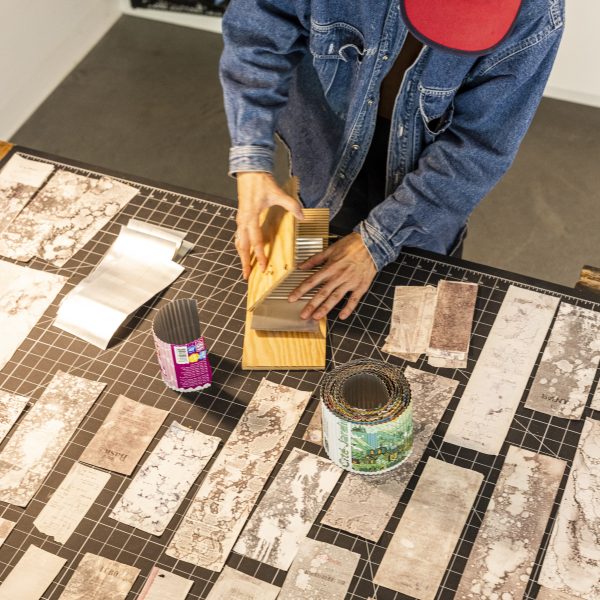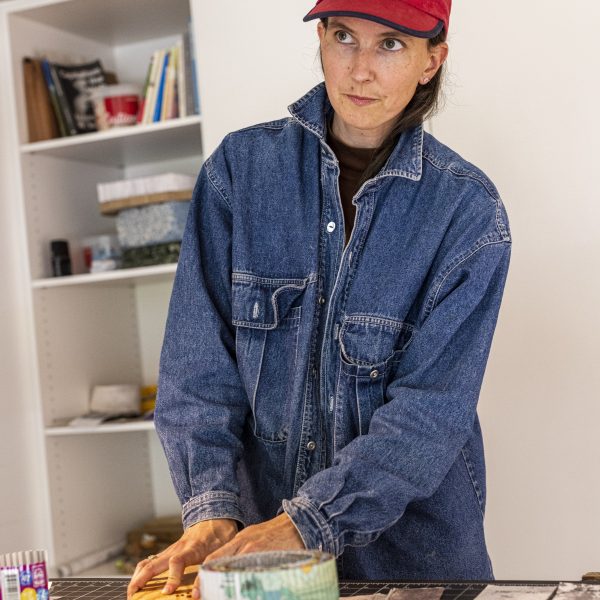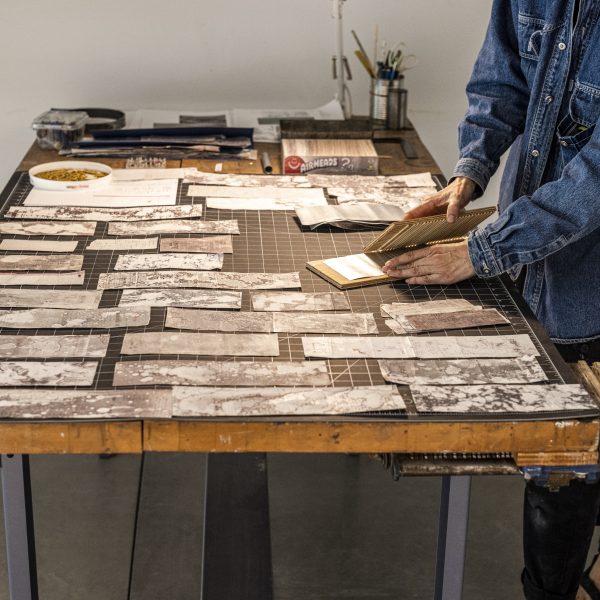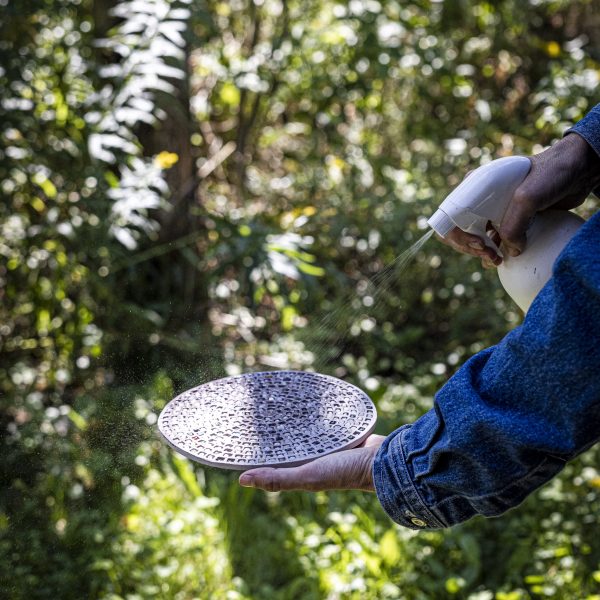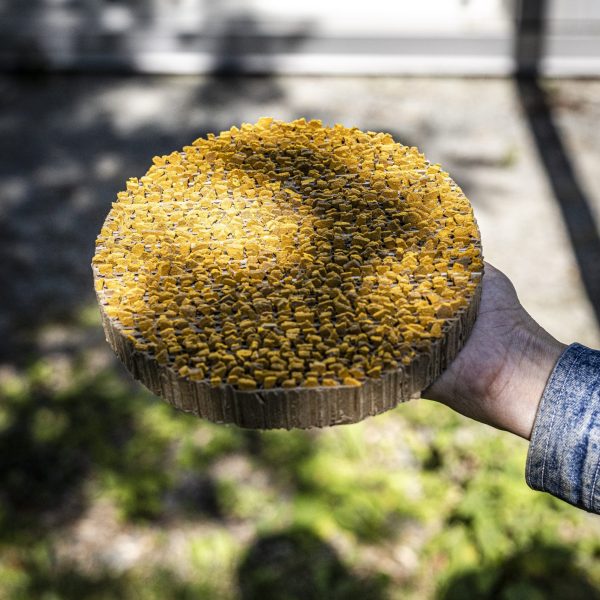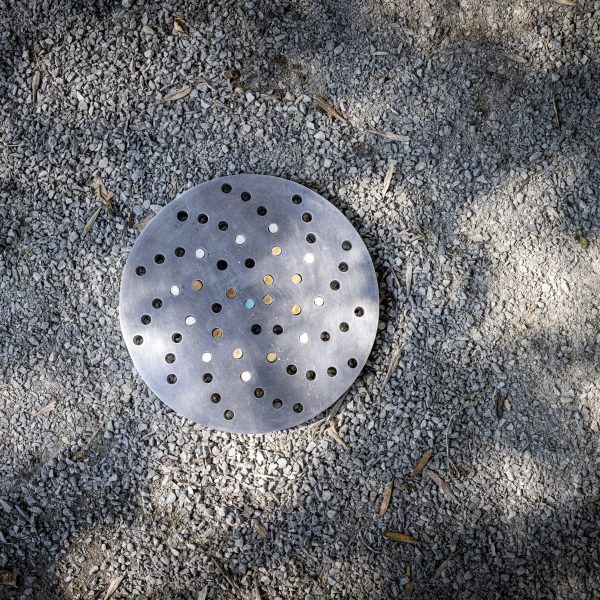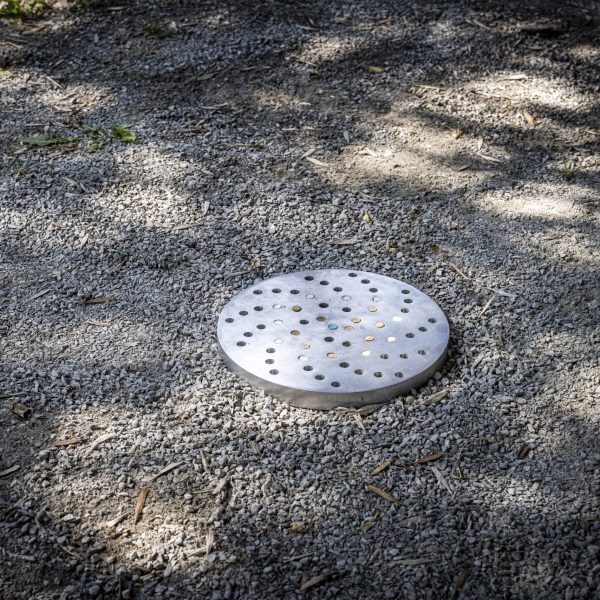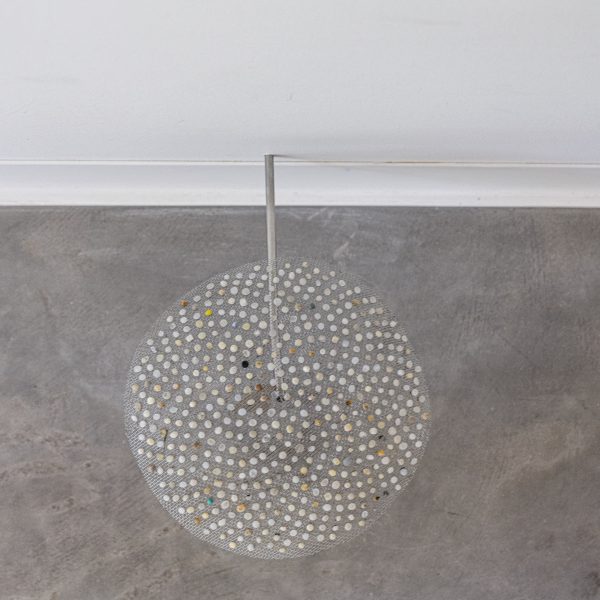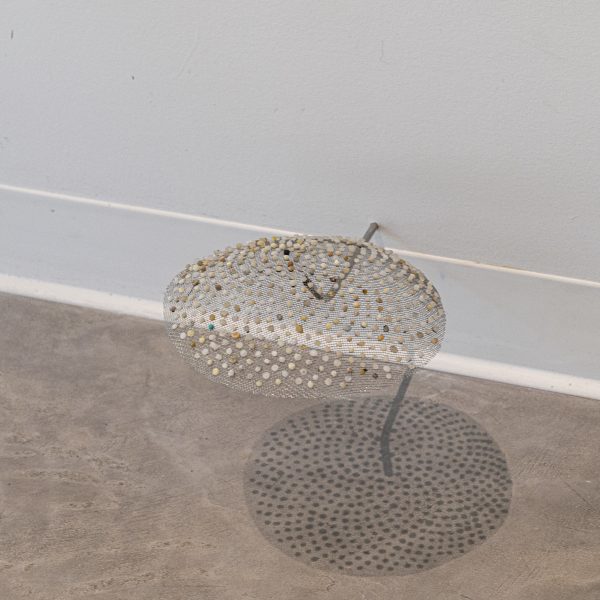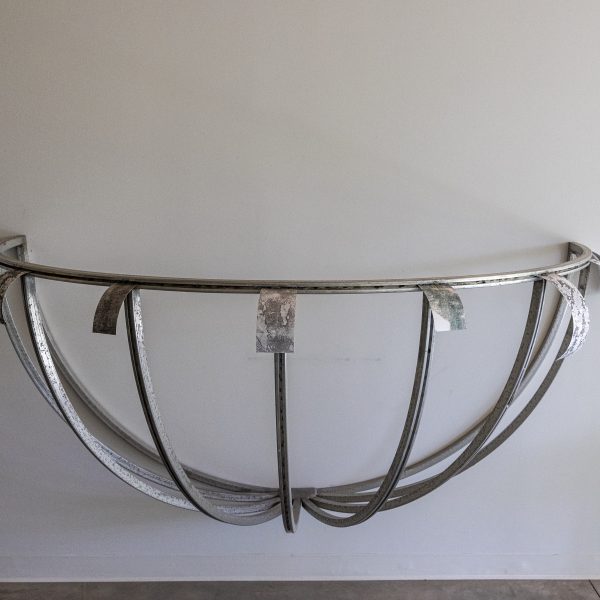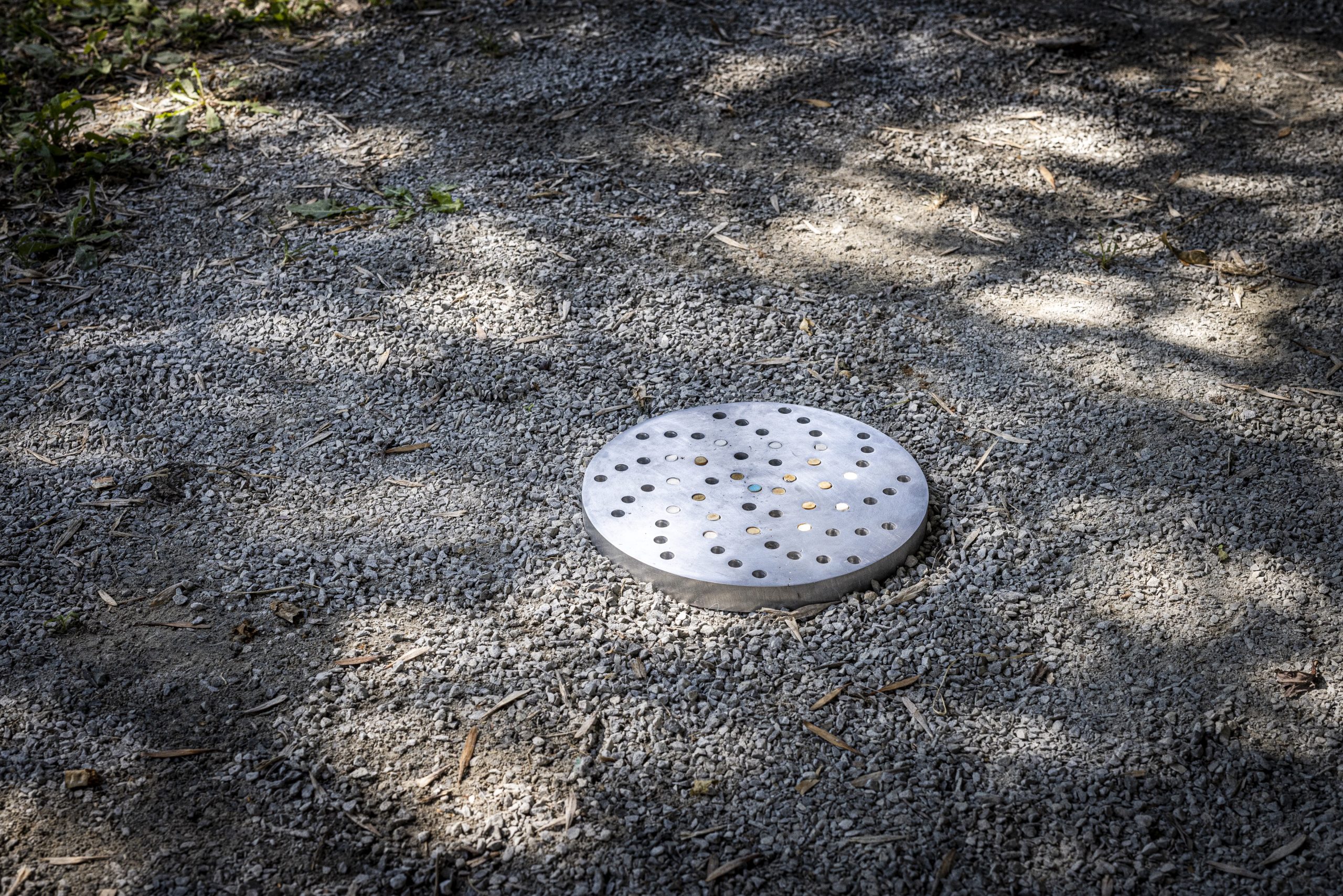
Tegan Moore
Testimony
Tegan Moore inscribes her work at the encounter between the body and industrially manufactured synthetic materials that become enmeshed in our daily lives, usually without our noticing. She immerses herself in a personal exploration of these common materials, which are scattered about our immediate environment in the form of residues.
In this spirit, Moore’s approach at Est-Nord-Est was based on routines that she imposed on herself to facilitate the adaptation of her companion animal to this new environment. Many of the materials she used were gathered during walks with her dog. She harvested crumbs of reflective paint, the remains of the canopy from an abandoned building, insulation paper from a demolition site, and tiny pieces of plastic detritus. She was interested in these “ultimate materials,” impossible to process but still polluting, even toxic, which she amalgamated with her own household or studio trash: a broken sieve, bits of cardboard, empty beer cans, cigarette butts. Her approach cannot be summarized, however, as today’s common practice of “upcycling.” This refuse remained what it was: garbage that encumbers daily life. Moore thus took a transversal look at our consumption habits and our immediate living environment.
Exploring this same proximity, Moore also conducted an almost-scientific experiment on the effect of antiseptic gel on the thermosensitive paper of cash receipts. The contact of bisphenol A, the reactive agent in this kind of paper, with the disinfectant increases its absorption by the body. An endocrine disruptor, bisphenol A presents a risk to the human body. On her studio table, Moore presented stained cash receipts that she had accumulated during the pandemic. Their familiarity, along with that of the repeated gesture of hand washing, was striking. They alerted us to our recurrent close contact with synthetic materials and our body’s porosity to them. Like her work with residues, this artistic gesture was aimed at making us aware of the unnoticed accumulation of residual materials in daily life and highlighting the modes of consumption and production involved their growing use.
Biography
Canadian artist Tegan Moore has a practice of salvage and re-use in which she examines the complexities of materials related to the built environment. Through her granular, experimental, and research-based studio practice, she resurfaces peripheral matter and infrastructures. She also works collaboratively with plastic pollution research group the Synthetic Collective and co-organizes the project space Support. Recent exhibitions include Condensations at Centre Clark, Montréal; Le synthétique au cœur de l’humain, Canadian Cultural Centre, Paris; and Residuum at Galerie Nicolas Robert, Montréal. She has participated in residencies in Japan, Finland, Norway, and France. Moore currently lives and works in Tio’ti’á:ke/Mooniyang/Montréal.
Discover
Newsletter
Keep up to date with the latest news!

